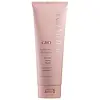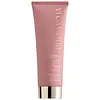What's inside
What's inside
 Key Ingredients
Key Ingredients

 Benefits
Benefits

 Concerns
Concerns

 Ingredients Side-by-side
Ingredients Side-by-side

Water
Skin ConditioningCocamidopropyl Betaine
CleansingSodium Lauroyl Methyl Isethionate
CleansingHeptyl Glucoside
Sodium Methyl Oleoyl Taurate
CleansingSodium Cocoyl Isethionate
CleansingSorbeth-230 Tetraoleate
EmulsifyingPolyquaternium-7
Phenoxyethanol
PreservativeSodium Chloride
MaskingCitrus Aurantium Dulcis Peel Oil
MaskingCaprylyl Glycol
EmollientCitrus Limon Peel Oil
MaskingDecyl Glucoside
CleansingPanthenol
Skin ConditioningHexylene Glycol
EmulsifyingMannitol
HumectantEthylhexylglycerin
Skin ConditioningPhosphatidylcholine
EmulsifyingGlycerin
HumectantPolyquaternium-10
Biotin
AntiseborrhoeicXimenia Americana Seed Oil
EmollientSorbitan Laurate
EmulsifyingPelargonium Graveolens Flower Oil
MaskingSr-(Wasp Spider Polypeptide-1 Oligopeptide-178)
Skin ConditioningAloe Barbadensis Leaf Juice
Skin ConditioningCetyl Alcohol
EmollientSodium PCA
HumectantSodium Lactate
BufferingPotassium Sorbate
PreservativeSodium Benzoate
MaskingArginine
MaskingAspartic Acid
MaskingGlycine
BufferingCitrus Aurantium Bergamia Fruit Oil
MaskingCeramide NP
Skin ConditioningStearamine
Sorbitan Oleate
EmulsifyingXanthan Gum
EmulsifyingAlanine
MaskingSerine
MaskingValine
MaskingThreonine
Isoleucine
Skin ConditioningProline
Skin ConditioningDimyristyl Phosphate
CleansingHistidine
HumectantPhenylalanine
MaskingGlycoproteins
Skin ConditioningOligopeptide-2
Skin ConditioningWater, Cocamidopropyl Betaine, Sodium Lauroyl Methyl Isethionate, Heptyl Glucoside, Sodium Methyl Oleoyl Taurate, Sodium Cocoyl Isethionate, Sorbeth-230 Tetraoleate, Polyquaternium-7, Phenoxyethanol, Sodium Chloride, Citrus Aurantium Dulcis Peel Oil, Caprylyl Glycol, Citrus Limon Peel Oil, Decyl Glucoside, Panthenol, Hexylene Glycol, Mannitol, Ethylhexylglycerin, Phosphatidylcholine, Glycerin, Polyquaternium-10, Biotin, Ximenia Americana Seed Oil, Sorbitan Laurate, Pelargonium Graveolens Flower Oil, Sr-(Wasp Spider Polypeptide-1 Oligopeptide-178), Aloe Barbadensis Leaf Juice, Cetyl Alcohol, Sodium PCA, Sodium Lactate, Potassium Sorbate, Sodium Benzoate, Arginine, Aspartic Acid, Glycine, Citrus Aurantium Bergamia Fruit Oil, Ceramide NP, Stearamine, Sorbitan Oleate, Xanthan Gum, Alanine, Serine, Valine, Threonine, Isoleucine, Proline, Dimyristyl Phosphate, Histidine, Phenylalanine, Glycoproteins, Oligopeptide-2
Water
Skin ConditioningCetearyl Alcohol
EmollientMacadamia Integrifolia Seed Oil
Skin ConditioningSodium C14-16 Olefin Sulfonate
CleansingLauramidopropyl Betaine
CleansingCocamidopropyl Hydroxysultaine
CleansingHeptyl Glucoside
Parfum
MaskingSr-(Wasp Spider Polypeptide-1 Oligopeptide-178)
Skin ConditioningPolyacrylate Crosspolymer-6
Emulsion StabilisingPentylene Glycol
Skin ConditioningGlyceryl Caprylate
EmollientHydroxyethylcellulose
Emulsion StabilisingGlycerin
HumectantMagnolia Officinalis Bark Extract
AntimicrobialAloe Barbadensis Leaf Extract
EmollientSodium PCA
HumectantPhytic Acid
Mannitol
HumectantPhosphatidylcholine
EmulsifyingSodium Hydroxide
BufferingCeramide NP
Skin ConditioningCitric Acid
BufferingCetrimonium Chloride
AntimicrobialBiotin
AntiseborrhoeicJasminum Grandiflorum Flower Extract
MaskingCananga Odorata Flower Oil
MaskingGardenia Jasminoides Fruit Extract
Cosmetic ColorantCitrus Junos Peel Oil
AstringentCetyl Alcohol
EmollientPotassium Sorbate
PreservativeSodium Benzoate
MaskingSodium Chloride
MaskingLimonene
PerfumingGeraniol
PerfumingCitral
PerfumingBenzyl Alcohol
PerfumingCitronellol
PerfumingAmyl Cinnamal
PerfumingFarnesol
PerfumingLinalool
PerfumingWater, Cetearyl Alcohol, Macadamia Integrifolia Seed Oil, Sodium C14-16 Olefin Sulfonate, Lauramidopropyl Betaine, Cocamidopropyl Hydroxysultaine, Heptyl Glucoside, Parfum, Sr-(Wasp Spider Polypeptide-1 Oligopeptide-178), Polyacrylate Crosspolymer-6, Pentylene Glycol, Glyceryl Caprylate, Hydroxyethylcellulose, Glycerin, Magnolia Officinalis Bark Extract, Aloe Barbadensis Leaf Extract, Sodium PCA, Phytic Acid, Mannitol, Phosphatidylcholine, Sodium Hydroxide, Ceramide NP, Citric Acid, Cetrimonium Chloride, Biotin, Jasminum Grandiflorum Flower Extract, Cananga Odorata Flower Oil, Gardenia Jasminoides Fruit Extract, Citrus Junos Peel Oil, Cetyl Alcohol, Potassium Sorbate, Sodium Benzoate, Sodium Chloride, Limonene, Geraniol, Citral, Benzyl Alcohol, Citronellol, Amyl Cinnamal, Farnesol, Linalool
Ingredients Explained
These ingredients are found in both products.
Ingredients higher up in an ingredient list are typically present in a larger amount.
Biotin is a B vitamin that is naturally produced by our bodies. It is also called Vitamin H.
Our bodies use biotin in the metabolism process. It also helps our bodies use enzymes and move nutrients around. A biotin deficiency can lead to brittle hair and nails.
More research is needed on applying biotin topically. However, taking biotin orally has been shown to help nourish the skin, hair, and nails. They play a role in forming skin-hydrating fatty acids.
Biotin is water-soluble. It can be found in foods such as fish, eggs, dairy, nuts, and meat. Vitamin H stands for "haar" and "haut". These are the German words for hair and skin.
Learn more about BiotinCeramide NP is a type of ceramide and formally known as ceramide 3.
Ceramides are intercellular lipids naturally found in our skin that bonds dead skin cells together to create a barrier. They are known for their ability to hold water and thus are a great ingredient for dry skin.
Ceramides are an important building block for our skin barrier. A stronger barrier helps the skin look more firm and hydrated. By bolstering the skin ceramides act as a barrier against irritating ingredients. This can help with inflammation as well.
If you would like to eat ceramides, sweet potatoes contain a small amount.
Read more about other common types of ceramides here:
Ceramide AP
Ceramide EOP
Cetyl Alcohol is a fatty alcohol. Fatty Alcohols are most often used as an emollient or to thicken a product.
Its main roles are:
Though it has "alcohol" in the name, it is not related to denatured alcohol or ethyl alcohol.
The FDA allows products labeled "alcohol-free" to have fatty alcohols.
Learn more about Cetyl AlcoholGlycerin is already naturally found in your skin. It helps moisturize and protect your skin.
A study from 2016 found glycerin to be more effective as a humectant than AHAs and hyaluronic acid.
As a humectant, it helps the skin stay hydrated by pulling moisture to your skin. The low molecular weight of glycerin allows it to pull moisture into the deeper layers of your skin.
Hydrated skin improves your skin barrier; Your skin barrier helps protect against irritants and bacteria.
Glycerin has also been found to have antimicrobial and antiviral properties. Due to these properties, glycerin is often used in wound and burn treatments.
In cosmetics, glycerin is usually derived from plants such as soybean or palm. However, it can also be sourced from animals, such as tallow or animal fat.
This ingredient is organic, colorless, odorless, and non-toxic.
Glycerin is the name for this ingredient in American English. British English uses Glycerol/Glycerine.
Learn more about GlycerinWe don't have a description for Heptyl Glucoside yet.
Mannitol is a sugar alcohol. It is a humectant and moisturizes the skin. In vitro (not tested on a living organism), mannitol displays antioxidant properties.
When found in aqueous solutions, mannitol tends to become acidic. This is because it loses a hydrogen ion. This is why mannitol can often be found with pH adjusting ingredients, such as sodium bicarbonate.
Fun fact: Mannitol can be found in foods as a sweetener. It can be naturally found in mushrooms, algae, fruits, and veggies.
Learn more about MannitolPhosphatidylcholine is a type of phospholipid. Phospholipids are naturally found in our skin as they are the main component of cell membranes. Phospholipids are skin-replenishing.
This ingredient can be found in the Lecithin of soybeans.
Potassium Sorbate is a preservative used to prevent yeast and mold in products. It is commonly found in both cosmetic and food products.
This ingredient comes from potassium salt derived from sorbic acid. Sorbic acid is a natural antibiotic and effective against fungus.
Both potassium sorbate and sorbic acid can be found in baked goods, cheeses, dried meats, dried fruit, ice cream, pickles, wine, yogurt, and more.
You'll often find this ingredient used with other preservatives.
Learn more about Potassium SorbateSodium Benzoate is a preservative. It's used in both cosmetic and food products to inhibit the growth of mold and bacteria. It is typically produced synthetically.
Both the US FDA and EU Health Committee have approved the use of sodium benzoate. In the US, levels of 0.1% (of the total product) are allowed.
Sodium benzoate works as a preservative by inhibiting the growth of bacteria inside of cells. It prevents the cell from fermenting a type of sugar using an enzyme called phosphofructokinase.
It is the salt of benzoic acid. Foods containing sodium benzoate include soda, salad dressings, condiments, fruit juices, wines, and snack foods.
Studies for using ascorbic acid and sodium benzoate in cosmetics are lacking, especially in skincare routines with multiple steps.
We always recommend speaking with a professional, such as a dermatologist, if you have any concerns.
Learn more about Sodium BenzoateChances are, you eat sodium chloride every day. Sodium Chloride is also known as table salt.
This ingredient has many purposes in skincare: thickener, emulsifier, and exfoliator.
You'll most likely find this ingredient in cleansers where it is used to create a gel-like texture. As an emulsifier, it also prevents ingredients from separating.
There is much debate on whether this ingredient is comedogenic. The short answer - comedogenic ratings don't tell the whole story. Learn more about comegodenic ratings here.
The concensus about this ingredient causing acne seems to be divided. Research is needed to understand if this ingredient does cause acne.
Scrubs may use salt as the primary exfoliating ingredient.
Learn more about Sodium ChlorideSodium PCA is the sodium salt of pyroglutamic acid. It is naturally occurring in our skin's natural moisturizing factors where it works to maintain hydration.
The PCA stands for pyrrolidone carboxylic acid, a natural amino acid derivative.
This ingredient has skin conditioning, anti-inflammatory, and humectant properties. Humectants help hydrate your skin by drawing moisture from the air. This helps keep your skin moisturized.
Learn more about Sodium PCASr-(Wasp Spider Polypeptide-1 Oligopeptide-178) is a peptide.
Water. It's the most common cosmetic ingredient of all. You'll usually see it at the top of ingredient lists, meaning that it makes up the largest part of the product.
So why is it so popular? Water most often acts as a solvent - this means that it helps dissolve other ingredients into the formulation.
You'll also recognize water as that liquid we all need to stay alive. If you see this, drink a glass of water. Stay hydrated!
Learn more about Water